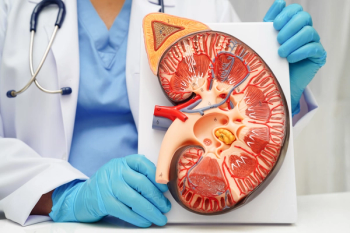
Researchers Explore Oncolytic Polymers as the Key to Fighting Tumor Heterogenicity
Oncolytic polymers may be the answer to circumventing therapeutic resistance in cancer treatment.
Cancer accounted for more than 10 million deaths in 2020, making it one of the leading causes of death behind heart disease. While numerous discoveries and novel therapies have made significant impacts in cancer treatment, the hurdle in achieving complete remission for patients remains due to tumor heterogenicity.
In a study published in Bioactive Materials, a team of researchers from Anhui University of Chinese Medicine found that oncolytic polymers may be the answer to circumventing therapeutic resistance. Oncolytic polymers are synthetic amphiphilic cationic polymers that are mimics of oncolytic peptides.
Although both share functions and benefits, oncolytic polymers have certain in vivo advantages that make them a better candidate. It’s critical to differentiate between oncolytic peptides and oncolytic polymers to appreciate the latter’s importance.
Oncolytic peptides can overcome tumor heterogeneity by targeting the membrane and achieving lysis specifically in malignant cells. Most conventional therapies work through signaling pathways to achieve a targeted response.
Oncolytic peptides take advantage of the differences between normal membranes and cancer cell membranes. This is a relatively non-specific mechanism that typically is not preferable because non-specific mechanisms mean increased toxicities.
However, this unique attribute of oncolytic peptides makes them highly effective against heterogeneity because of their ability to react with cancer cells, even in their dormant phase. The challenge that researchers have historically faced with oncolytic peptides is the poor bio-distribution, stability, and as mentioned, toxicity in vivo.
To circumvent some of the issues with oncolytic peptides, researchers have developed peptide-mimicking oncolytic polymers, which are more stable, less costly, and easier to mass produce.
Furthermore, oncolytic polymers are superior to oncolytic peptides due to their intrinsic anticancer properties. They can be used alone to achieve results and used alongside other antineoplastic therapies.
The researchers also describe their efforts with using nano-delivery vesicles to administer oncolytic peptides to achieve a tumor-targeted controlled release. Although this was achievable in a theoretical sense, it was not able to meet the needs of production because of various practical factors. Conversely, oncolytic polymers were compatible with nanotechnology drug delivery strategies.
Researchers still have questions about oncolytic polymers. The following are areas for further research:
- The structure activity relationships of oncolytic polymers and their intracellular mechanism are still being studied.
- While oncolytic peptides have had reports of resistance from certain cancers, oncolytic polymers are being examined for similar resistance.
- Determining an optimal and safe administration route because this can significantly affect the adverse effect and efficacy profiles.
- Identifying long terms health implications and the degradation products of oncolytic polymers.
- Assessing efficacy in complex tumors, such as glioma/glioblastoma brain tumors, in which physiologic factors such as the blood brain barrier can be an obstacle.
Synthetic polymers, which have traditionally been inert components in therapies, show promise as they could potentially become the next revolutionary discovery in cancer therapy.
About the Author
Sumoda Achar is a 2024 PharmD candidate at the University of Connecticut.
Reference
Liu H, Shen W, Liu W, Yang Z, Yin D, Xiao C. From oncolytic peptides to oncolytic polymers: A new paradigm for oncotherapy. Bioact Mater. 2023;31:206-230. doi:10.1016/j.bioactmat.2023.08.007
Newsletter
Stay informed on drug updates, treatment guidelines, and pharmacy practice trends—subscribe to Pharmacy Times for weekly clinical insights.
















































































































































































































